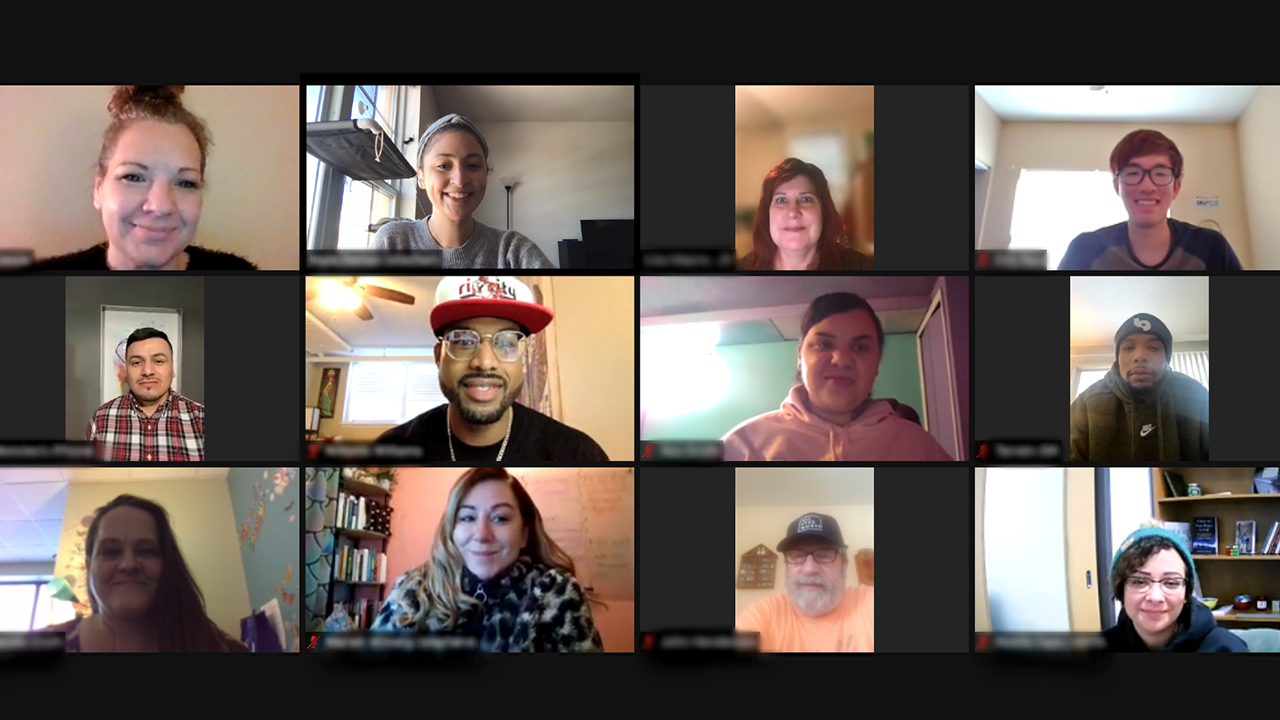
Project advisory board members and project staff at their January advisory board meeting.
A team from the University of Minnesota Healthy Youth Development - Prevention Research Center (PRC) aiming to increase COVID-19 vaccine confidence and uptake among Minnesota’s jail and prison populations is making progress, thanks to the wisdom and generosity of its community advisory board.
Each member of the PRC research team’s 14-member advisory board has lived experience with incarceration. And many also have family and friends who are currently incarcerated. The group meets monthly with the project team to discuss updates on what is happening with COVID-19 inside of prisons and jails, share their stories and experiences, and use their collective wisdom and expertise to come up with strategies aimed at increasing vaccine confidence and uptake in prisons and jails.
Rebecca Shlafer, PhD, the project's principal investigator, said, “Our advisory board’s partnership is essential to our project's success and to our efforts to document and challenge the ways in which systemic racism perpetuates harm against people involved in the criminal legal system and compromises the health of communities.”
Congregate living in prisons and jails makes physical distancing impossible and sanitation and personal hygiene difficult. This daily reality increases the risk of contracting COVID-19 for both incarcerated people and prison/jail staff. Staff in carceral facilities have the added potential to carry COVID-19 into facilities from their communities and back out into their communities from facilities, posing a great public health threat to both people who are incarcerated and people in their nearby communities.
According to a 2021 study using data from the UCLA Law COVID Behind Bars Data Project, the toll of COVID-19 is far greater among the prison population than the overall US population.
When exposed to the virus, incarcerated people are also at increased risk for severe COVID-19 disease/death, due in part to high rates of chronic conditions and limited staff capacity—in the best of times—for corrections healthcare services to meet incarcerated people’s complex health needs.
Because of systemic racism in the criminal legal system, people of color experience the impacts of incarceration more often and more profoundly. People of color are incarcerated at disproportionately higher rates than white people in the United States. In Minnesota, these disparities are even more pronounced. For example, Black people represent about 5% of the state’s population, but 31% of the state’s incarcerated population. Similarly, American Indian populations represent only 1% of Minnesota’s population, but 8% of its incarcerated population. As a result of these racial disparities in incarceration rates, the impacts of COVID-19 behind bars are exacerbated among people of color and worsen existing health disparities. Addressing COVID-19 within carceral facilities is an issue of health equity.
The UMN PRC was awarded supplemental funding in 2021 to help implement the CDC’s COVID-19 Vaccine Confidence Strategy as a member of the Connecting Behavioral Science to COVID-19 Vaccine Demand (CBS-CVD) Network. The goal of this project is to understand barriers to COVID-19 vaccination and inform intervention strategies to increase COVID-19 vaccine confidence and uptake among people who are incarcerated and corrections staff in Minnesota’s jails and prisons.
To date, the team has collected information from hundreds of prison and jail staff members (including information featured in this MPR story, Star Tribune story, and MinnPost commentary), as well as thousands of people currently incarcerated in prison and jail settings. This information, paired with advisory board insights stemming from their lived experiences, professional wisdom, and exceptional advocacy efforts, has guided the identification of different approaches to increasing COVID-19 vaccine confidence and uptake in prison and jail settings, including hosting a vaccine clinic at a local jail, developing tailored educational materials for incarcerated people, and facilitating discussions with jail staff and health care providers. This group continues to work on a host of community-led, trauma-informed, and culturally-tailored materials for those in prisons and jails.